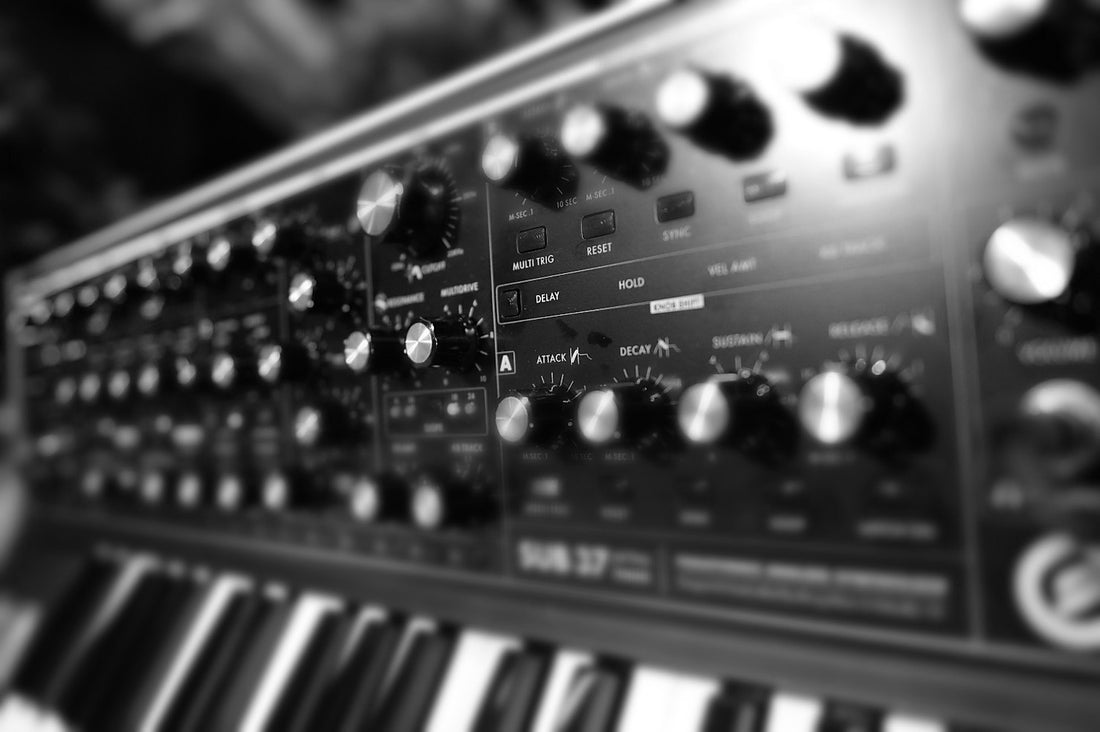Just starting out in the music production world?
Sound design can be daunting for several reasons:
-
Complexity: Sound design involves manipulating various audio elements such as synthesizers, effects, samples, and recordings. Understanding the technical aspects of these components, including their parameters, routing, modulation, and automation, can be overwhelming for beginners.
-
Learning Curve: Sound design often requires learning new software or hardware tools, which can have steep learning curves. DAWs and synthesizers can be intricate, and mastering them takes time and practice.
-
Creative Expression: Sound design is an art form, and like any creative process, it requires experimentation, exploration, and honing one's skills. It can be challenging to translate the ideas in your head into the sounds you want to create, and it may take time to develop a unique sound signature.
-
Technical Knowledge: Sound design involves understanding concepts such as frequencies, harmonics, envelopes, filters, and effects processing. Acquiring the necessary technical knowledge and skills can seem overwhelming, especially for those without a background in music theory or audio engineering.
-
Perfectionism: Many aspiring sound designers strive for perfection and can become self-critical of their work. Sound design is subjective, and finding the right balance between personal satisfaction and striving for improvement can be challenging.
Overcoming the challenges of sound design requires patience, persistence, and a willingness to learn. Taking small steps, experimenting with different techniques and tools, and seeking resources such as tutorials, courses, and communities can help demystify the process and make it less daunting. Additionally, breaking down the process into manageable tasks and setting realistic goals can make the learning journey more enjoyable and rewarding.
So we've put together this handy quick start guide to help you get a head start with these 5 essential sound design tips.
NOTE: This guide goes hand in hand with our guide on the fundamental synth definitions here so be sure to check that out too!
Start a blank Preset

Always better to start from an Initialisation patch than a pre-programmed preset. It'll give you a good grounding to start your sound design and you won't get lost in a sea of parameters trying to find you way out.
Many synths have a base patch/preset with normally the synth raw sound from 1 oscillator and no other features or FX activated. These can often be found in the preset list as just 'INIT' or sometimes a menu function called 'INITIALIZE' - this will default all synth values back to that raw sound.
Alternatively if such a preset or menu setting is not present you can normally control click or (MAC) CMD click each know and button to bring it back to a default baseline position, do that for all and save that as your own INIT patch as a bare sonic canvas to return to when you need.
Start with small synth tweaks

Start by using a simple sawtooth waveform, add a lowpass filter and play with the (ADSR) Attack, Decay, Sustain, Release settings first on the AMPplifer envelope.
This should give you a feel for the sharpness or relaxed state of how a sound can sound just by playing with those features. Does it glide in gently and sound suitable for ethereal pads or is it really snappy and sounds like it would make an ideal bass sound?
From there move onto the FILter and build an awareness of how this influences the sounds timbre (colour/tone). Opening and closing the filter does it sound bassy, open, bright, brash? A closed filter can make it sound like the sound is coming from the room next door whilst an open filter sounds like it's upfront and in front of you. Understand(listen) to how the filter interacts with the raw sound.
Once you've grasped the basics of how these 4 elements interplay with each other you can start building up from there.
Leave the synth FX

Don't be tempted to load up on FX, particularly early on. It will cloud your ability to hear minute changes as you experiment with different settings. It can make the sound artificially 'more attractive' to your ear slowing your progress in learning and honing your craft.
Focus on a raw sound, make that raw sound good, interesting, sonically pleasing or interesting in a a certain way. Once you've achieved that basic fundamental goal then apply effects sparingly, bring in obvious sounding effects such as a slight delay, chorus or reverb first and listen to how this enhances or changes the tone.
Reverse Engineer Presets

Don't be afraid to reverse engineer some of your favourite presets from different sound designers. Sometimes the best way to learn is to understand how others got there in the first place. You may be surprised how a complex interesting sound can actually rely on the less is more approach.
By reverse engineering synth presets you can quickly get an understanding of how the pro's make sounds which could save you hours otherwise spent experimenting to get to that place in the first place.
Use those learnings from pro-sounds to create something new you can then call your own.
Cut your losses

Sometimes you can paint yourself into a corner when in experimental / learning stages.
Don't be afraid to cut your sonic losses and re-initialise the preset to rebuild on your previous learnings rather than trying to introduce too much into your existing attempts.
Adding too many random parameters on top of one-another can overload a sound and make it incredibly difficult to get back from.
Not only that but it'll hamper your ability to hear subtle tweaks and changes to the base parameters making it harder for you to judge 'what that knob just did when I twisted it round to that setting'.
Good sound design is as much about effectiveness through simplicity as it is audio gymnastics via wild modulation settings.
Save your sounds regularly.
As you start from zero to building your sound in stages, save each patch iteration when you hit a mini-milestone in sound design. Here're some example exercises on saving your new sounds.
1. Build a basic sound with 2 raw oscillators slightly detuned. Save it.
2. Add in a filter, dial the filter down, add some resonance to sharpen the sound. Save it.
3. Add some filter ADSR to make it sweep in and out more gently. Save it.
4. Add some chorus and a small amount of reverb or delay just enough so it compliments rather than engulfs the sound. Save it.
By saving at each iteration of sound design you A: have a point in time you can return to if you make mistakes or introduce something you can't undo and B: each iteration provides a new fork on where you could take a sound, each one waiting for a new decision on what to try changing and you could very easily make countless sounds just by forking off from each of the 1, 2, 3 and 4 stages above for instance.
This also helps you preventing the need for to start EVERY sound from scratch and over time will help you build themes of patches that work well together. Eg 20 ethereal style pads are always going to have a slow attach and release so there's little point in starting from a patch that's always set to a quick attach and release as those are the first things you'll need to change towards making ethereal pads.
Conclusion:
Through these 5 tips you've obtained some fundamental steps on starting your sound design journey. Take it slow, listen, document and save your changes as your progress and take an iterative approach to each saved sound by building upon the last.

